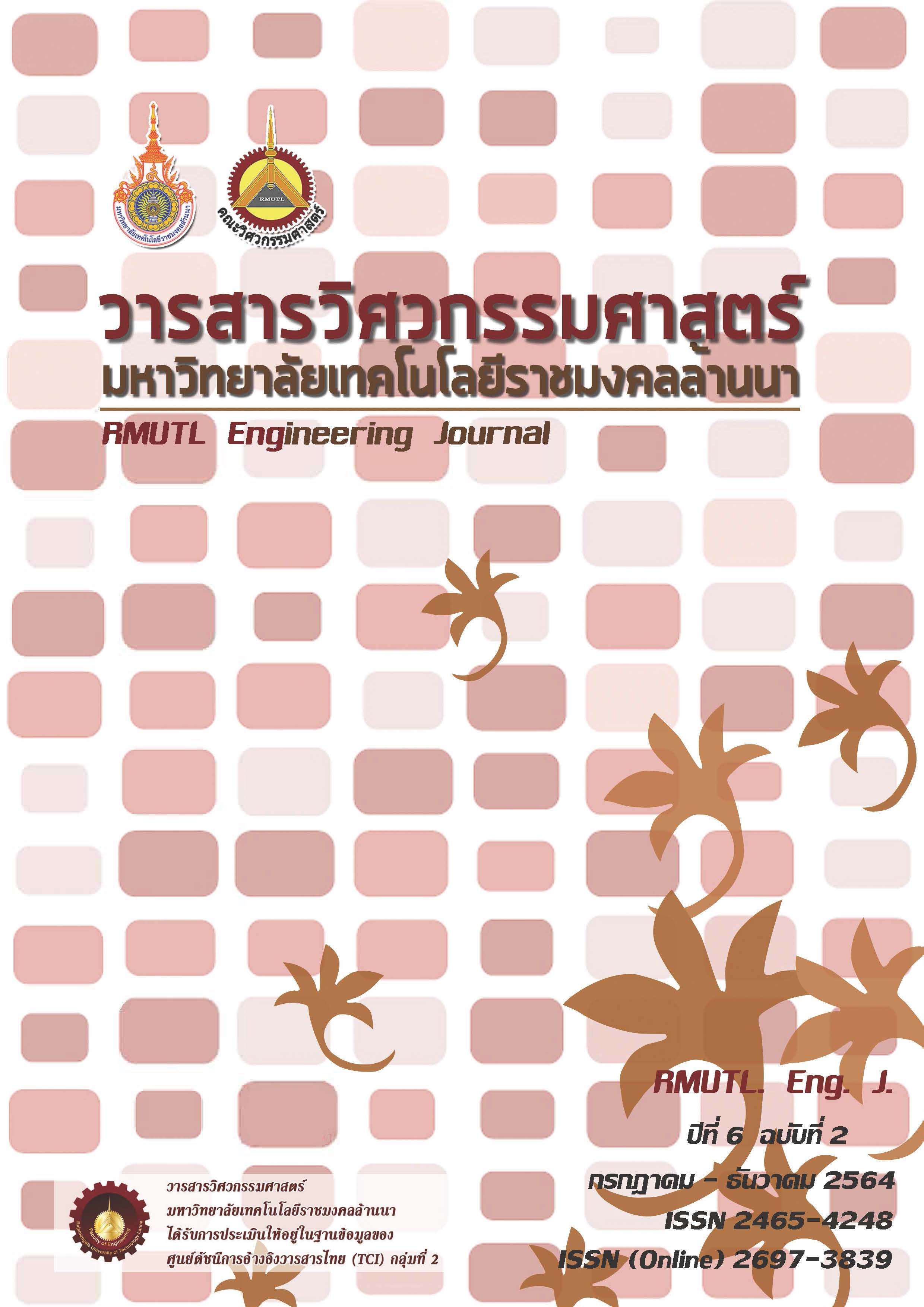Training Kit for the Performance of Optical
DOI:
https://doi.org/10.14456/rmutlengj.2021.8Keywords:
Performance Training set, Fiber Optic, Communication WorkAbstract
The purposes of this research were 1) to develop the fiber optic communication performance training kit, 2) to find the efficiency of the fiber optic communication performance training kit, and 3) to compare the post- learning achievement between the experimental group and the control group in computer networking system subject (Subject Code 3105-9004) in High Vocational Certificate, Office of the Vocational Education Commission.The sample groups consisted of 35 students in the 1st year from the branch of Electronics at Phrae Technical College who enrolled in computer networking system subject for the academic year 2019. They were divided into 2 groups by simple random method which consisted of the experimental group of 14 students and the control group of 21 students. The instruments used for data collection were: 1) the evaluation form for the fiber optic communication performance training kit; 2) the learning achievement test. The statistics used to analyze the data were mean and standard deviation. The hypothesis was tested with t-test dependent and t-test independent statistics. The results of the research were as follows: 1) the development of the fiber optic communication performance training kit was in the highest levels. The average value was 4.68, 2) the developed fiber optic communication performance training kit was efficient at 82.07 / 80.71 which was according to the provided criteria, and 3) the post-learning achievement of the experimental group was significantly higher than the control group at 0.05.
References
[2] Jatuchai Pangchan. Network System 2nd Edition. Nonthaburi: IDC Infographic Center. 2008.Thai.
[3] Optical Fiber: Available from: https://th.wikipedia.org/wiki/OpticalFiber [Accessed December 21, 2019]
[4] Somboon Teeravisitphong. Fiber Optic Communication Fiber Optic Communication. Bangkok: Triple Group. 2012.Thai.
[5] Poonyawee Chamjarikul. Optical fiber communication system. Bangkok: Chulalongkorn University Press. 2007.Thai.
[6] Luan Saiyot and Angkhana Saiyot. (2010). Educational research techniques. Edition 11. Bangkok: Suveiriyasarn.Thai.
[7] Chaiyong Promwong. Testing media efficiency or teaching series. Silpakorn Education and Research Journal. Year 5 No. 1 (January - June 2013).
[8] Sanya Pho Wong. (2017). Development of an industrial electronic performance training kit. Board WD 81-84 Industrial Electronics subject code 2105-2111. Vocational Certificate Program, BE 2013. Office of Vocational Education Commission.
[9] Charongwut Srithongboriboon. Develop a set of practical skills Introduction to machine tool work, cutting, grinding and drilling with MIAP teaching style for professional learner level. Silpakorn Educational Research Journal. Volume 12. Issue 1, 2020: pp.281-296.
[10] Praiboon Kulduang, Sirirat PetSangsri and Chantana Wiriyavejkul. Web- Based Training with Embedded Simulator on Industrial Electrical Control System by Programmable Logic Controller (PLC). Journal of Industrial Education Minister. Vol.14 No.1 (2015)










